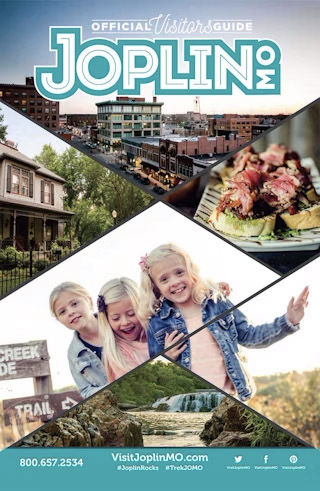Exploring Our Community
Life in Joplin, Missouri
Located in the heart of the Four State Area where Missouri, Kansas, Oklahoma, and Arkansas converge, Joplin serves as a vibrant hub of commerce and culture in Southwest Missouri. Flying over Joplin reveals a picturesque landscape characterized by rolling Ozark hills, lush forests, and the meandering Shoal Creek that winds through the city. The surrounding countryside features dramatic limestone bluffs, pristine waterways, and the natural beauty that defines the Ozark region.
Regional Significance & Recognition
- Hub city of the 400,000-person Four State Area
- Named one of the "Top 100 Places to Live" by RelocateAmerica
- Recognized for its remarkable recovery following the 2011 EF5 tornado
- Featured in Forbes as one of America's fastest-growing small cities
For physicians seeking a thriving medical community with regional impact, Joplin offers the opportunity to serve as a healthcare leader in a major hub city while maintaining excellent work-life balance.
Geographic & Climate Highlights
- Four distinct seasons with approximately 210 sunny days per year
- Average summer highs of 89°F and winter lows of 24°F
- Annual rainfall of 46 inches provides lush greenery
- Average snowfall of 12 inches, allowing for winter activities
This moderate four-season climate allows families to enjoy outdoor activities year-round with minimal disruption to lifestyle or medical practice.
Transportation & Accessibility
- Joplin Regional Airport (JLN) offers daily commercial flights
- Major highways: Interstate 44 and Highway 71/49
- Driving distances:
- Kansas City: 150 miles
- Tulsa: 110 miles
- Springfield, MO: 70 miles
- Northwest Arkansas: 90 miles
Joplin’s strategic location balances professional independence with access to metro-area conveniences.
Economic Vitality
- Major employers include:
- Freeman Health System
- Mercy Hospital Joplin
- Manufacturing & distribution centers
- Missouri Southern State University
- Growing technology and healthcare sectors
- Robust retail corridor along Range Line Road
- Downtown Joplin undergoing cultural and commercial revitalization
A diverse economic base provides long-term stability and employment opportunities for physicians and their families.
Natural Attractions
- Grand Falls – Missouri’s largest continuously flowing waterfall
- Shoal Creek – Fishing, kayaking, and scenic beauty
- Prairie State Park – Located within 30 miles
- Conservation areas and nature centers nearby
- Quick access to:
- Mark Twain National Forest
- Table Rock Lake (90 minutes)
- State parks within 1-hour drive
Joplin offers abundant outdoor recreation, making it ideal for families seeking natural beauty and adventure close to home.
Quality of Life Benefits
- Cost of living below the national average
- No traffic congestion – 15-minute average commute
- Strong community values and Midwestern hospitality
- Blend of small-town charm and big-city amenities
- Vibrant arts and cultural scene
- Year-round outdoor activities for all ages
For physicians, Joplin combines professional opportunity with exceptional lifestyle advantages, offering a rare blend of career growth and personal fulfillment.
